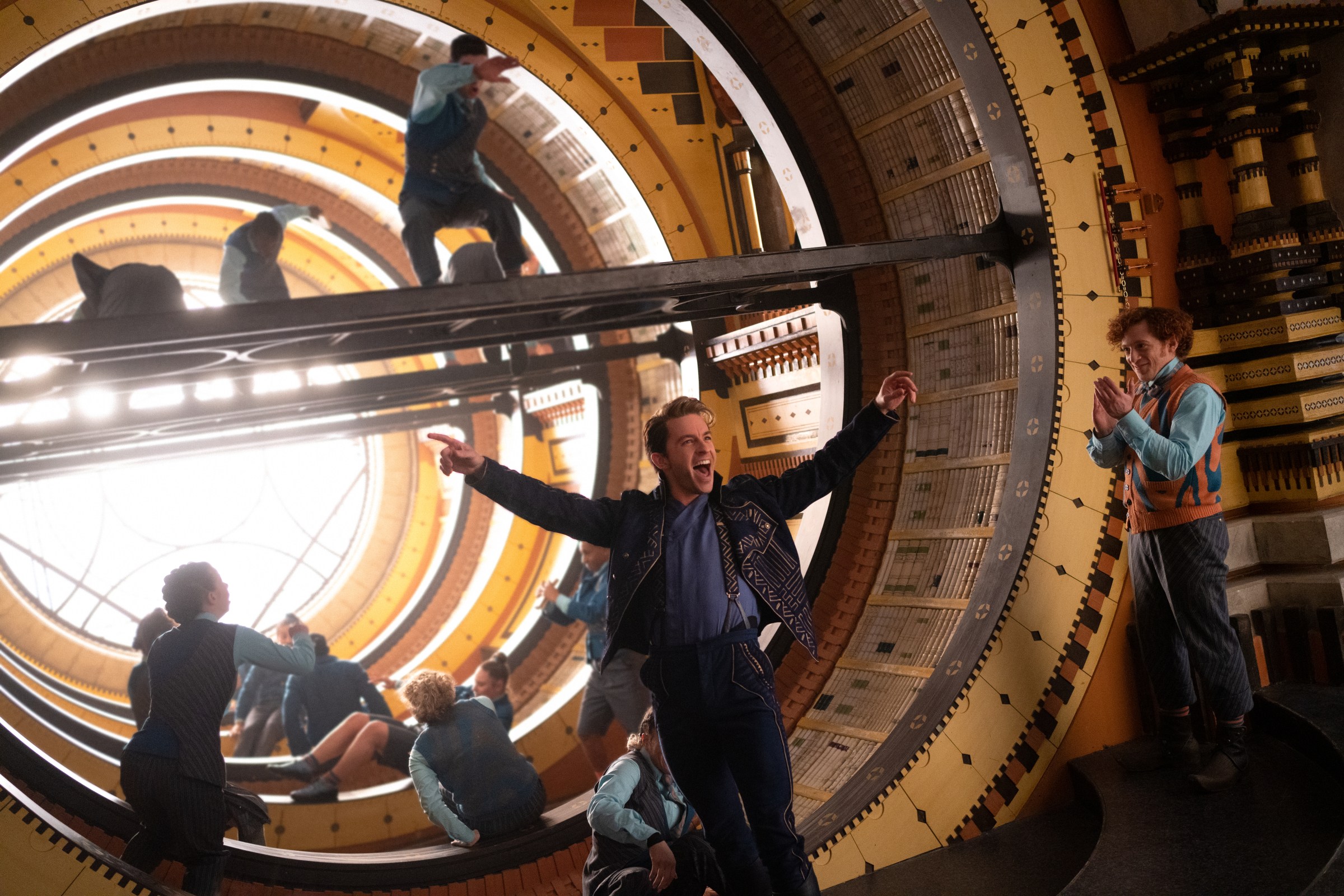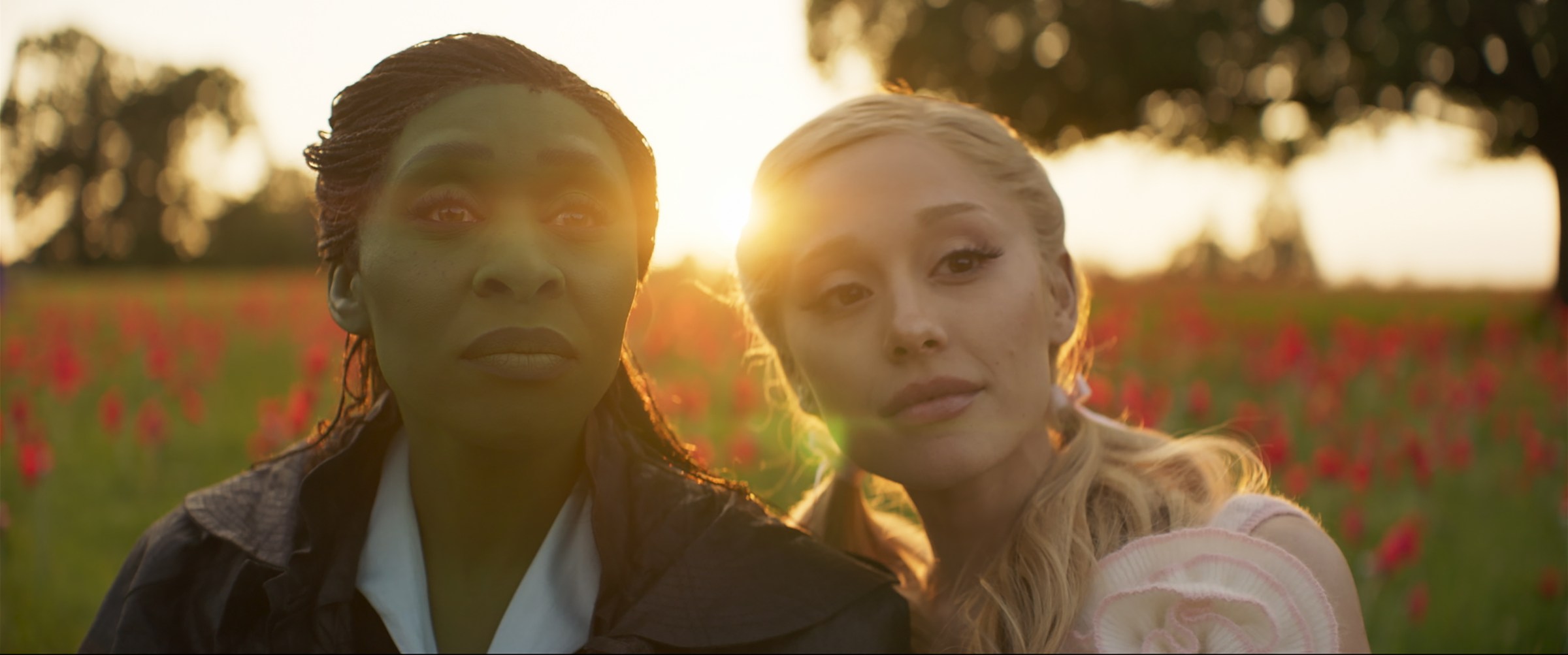Wicked unashamedly targets people who love musicals and no one else (for the better)
For too long, musical theater fans have been bothered by movie adaptations that actually try their best not are musicals. This has not always been the case, but in recent years marketing has hidden song and dance sequences in what seems like a convoluted attempt to get people who don’t like musicals to see a musical (which they will usually hate). Large casts of musical ensembles so often include that One man who actually can’t do that Sing but looks great on a poster (Which I think ties into the high school theater experience, but I digress). And in general, the set and costume design tends to blunt rather than build upon the creativity that comes from the limitations of theater.
But Thank God! Even though it seemed like the marketing was trying to hide the musical nature of it Badit is actually and very happily a musical film adaptation for people who love musicals. Finally!
Director Jon M. Chu exceeds expectations and deftly avoids the film adaptation pitfalls that could have worked against him Bad. The film celebrates its musical nature, rather than begrudgingly accepting it. It’s nothing short of amazing.
(Ed. remark: This review contains minor setup spoilers for Bad.)
Bad is more or less a straight adaptation of the first act of the musical. In the beginning, Glinda (played by Ariana Grande) announces to the residents of Oz that the Wicked Witch of the West is dead. But after someone questions her past relationship with the Wicked Witch, Glinda confesses that they went to school together, and tells the story of how she and Elphaba (Cynthia Erivo) crossed paths at Shiz University. Elphaba, with her bright green skin, was an outcast, while Glinda (who then went by her given name Galinda) was a popular social climber, so they initially clashed. But they eventually formed a close friendship that was put to the test when Elphaba received an invitation from the all-powerful Wizard of Oz.
The Land of Oz has captivated audiences on screen since Dorothy stepped into a Technicolor wonderland in 1939. Bad continues this grand tradition, with every inch of the film carefully crafted. There are big, cool set pieces, like intricate rotating shelves in the university library and Galinda’s endless stacks of pastel pink suitcases – but there are details hidden in every corner of the film that really just color this magical world, like a collection of colorful hummingbirds. ringing around a set of bells to summon students to the meeting. There’s a level of care given to every part of this world, building on the show’s legacy and expanding the same overall turn-of-the-century fantasy aesthetic to new visual heights. But it’s not just beautiful; The set design also really responds to the musical theater feeling. Instead of just being a fancy CG backdrop, the sets are used as if they were on stage. If there’s a cool bit of production design, it’ll probably be used in a musical number, with the cast dancing, singing and jumping all over it.
And sing this cast can do that too – and not just the bare minimum. All the actors perform their roles thoroughly, from the bit players like Bowen Yang and Bronwyn James as Galinda’s two unflappably loyal best friends to more crucial roles like Jeff Goldblum’s perfectly smart wizard and Ethan Slater’s appropriately pathetic simpleton Boq. But Grande in particular is phenomenal. It turns out she can do more than the airy, soaring vocals her pop music is known for, and she really pulls off the weight of a Broadway number. She has impeccable comic timing and gives the ambitious Galinda a perfect edge. With every wave of her hair, every faux-innocent bat of her big, long-winged brown eyes, Grande commands a presence.
It almost teeters on the edge of feeling unbalanced, but to be fair, Act 1 of the musical is more about Glinda than Elphaba. And in her scenes, Erivo holds her ground. She manages to capture the vulnerability that folds Elphaba beneath layers and layers of cool detachment. They are magical together – for a small fee for the charming Prince Fiyero (Bridgerton‘s Jonathan Bailey), who, while magnetic in his own right, simply doesn’t have the same level of chemistry with either woman as he does with each other.
But that’s okay, because Galinda and Elphaba’s relationship is the core of the show (and we’re Gelphie truthers here). One of the film’s most evocative scenes is a silent dance between Galinda and Elphaba, which takes place in the middle of “Dancing Through Life.” It’s already one of the longest songs in the musical, but extending it was absolutely the right move for this adaptation. It’s a deeply intimate moment when these two women actually connect for the first time, and Grande and Erivo manage it without a single word said, spoken or sung. This scene exists in the show, but a film adaptation allows for a close-up, which increases the emotional power of the scene as the camera pulls in and lingers on their faces.
For the most part, Chu uses the new medium to add meaningful additions to the story. Not all of them land. The film’s last major scene in particular suffers from this strange kind of start-stop, integrated with some superfluous major set pieces that undermine the emotional catharsis of the Big Moment. Such is the nature of expanding a nearly three-hour musical into two films, even with a natural intermission. And overall, adding breathing room to songs and scenes worked for the most part. It takes more than some extra fluff to bring the film down.
I’m well aware that it’s cliché to call something a love letter, but then again I don’t think I’ve ever seen a movie feel so much like a love letter in terms of its source material than Bad. And if someone does is As a huge fan of the source material, I felt deeply and thoroughly cared for in a way I’ve rarely felt when it comes to big blockbuster films. This is a film about two powerful women and the life-changing friendship between them, and it’s full of beautiful ball gowns, spine-tingling musical riffs, extended song and dance sequences, and just enough nods to the original. Bad is a movie musical for people who like musicals – and it doesn’t try to appeal to anyone else. That’s what makes it so special. It’s unapologetically a theater kid’s dream, taking everything great about the show and elevating it in a way that still honors what came before, from the opening notes to the final moment when Elphaba soars into the western sky.
Bad will be in cinemas from November 22.


